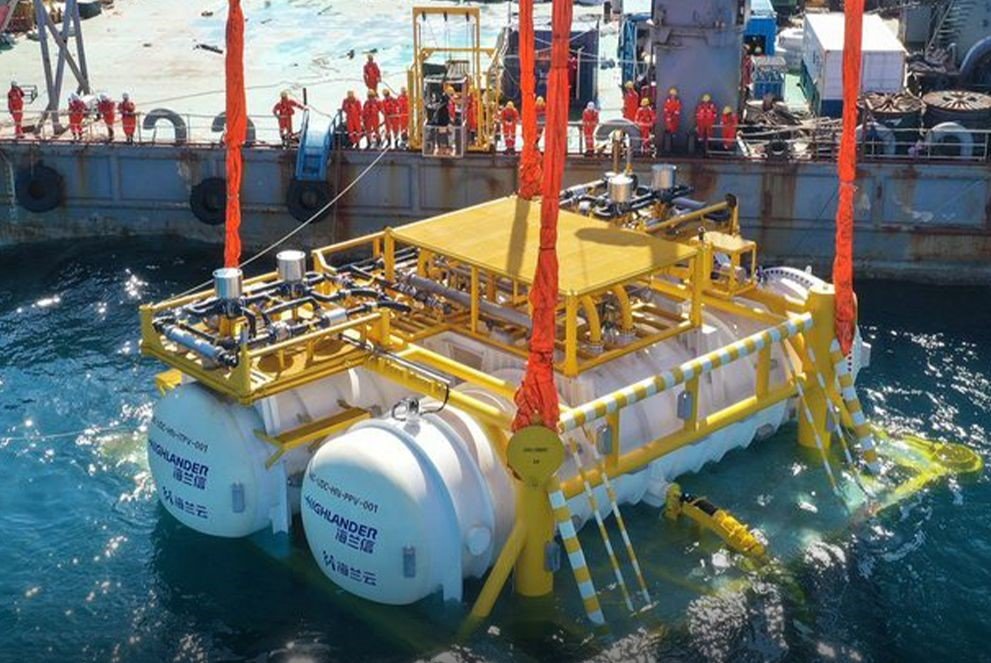Shanghai Launches First Offshore Wind-Powered Underwater Data Center with Ocean-Cooled AI Efficiency

Shanghai Unveils World’s First Offshore Wind-Powered Underwater Data Center
Revolutionizing Computing with Ocean-Cooled Infrastructure
A major technological milestone is set to unfold off the coast of Shanghai this September, as a cutting-edge underwater data facility backed by Hailanyun Technologies prepares for launch. This project, positioned 10 kilometers from the city’s shores and strategically close to one of China’s most important artificial intelligence clusters, represents a transformative approach to the digital infrastructure powering modern economies. Sporting a project budget of $223 million, this facility aims to redefine how next-generation computing can be delivered sustainably and efficiently.
Anchored in the Lin-gang Special Area and developed in collaboration with regional stakeholders, the initiative integrates a novel cooling method. By leveraging the constant, moderate temperature of seawater, the facility is able to slash electricity consumption required for cooling by roughly a third compared to conventional land-based counterparts. The infrastructure further distinguishes itself by relying almost entirely on offshore wind for its energy needs, harnessing renewables to operate high-density AI servers with minimal environmental footprint.
Technical Leap: Merging AI Performance and Sustainability
Phase one of the Shanghai underwater facility will support up to 800 AI servers—a capacity markedly lower than standard data centers in the country, where server counts typically run more than tenfold higher. This approach emphasizes proof-of-concept, with advancement to larger-scale clusters contingent on successful demonstration of operational and environmental viability. Each server rack within the new structure plays a role in training advanced machine learning models while maximizing the benefits of submerged, naturally-cooled environments.
Operating at depth, the center relies on a closed-loop water circulation system. Cold ocean currents channel through radiator-equipped racks, ensuring optimal thermal management without drawing upon freshwater resources or traditional chillers. This streamlined design generates significant reductions in both energy consumption and associated emissions, as almost 97 percent of the facility’s electricity is provided by green wind resources tethered directly to the site. As such, the structure embeds itself as a reference point for sustainable, high-performance computing.
Environmental Oversight and Global Significance
Mitigating the ecological effects of innovative infrastructure remains paramount in urban and marine planning. According to data from Hailanyun Technologies, trials demonstrated that heat introduced to surrounding waters never exceeded a one-degree Celsius increase, with modeling indicating that this temperature variation imposes a negligible impact on marine life and local ecosystems. These findings reflect a deliberately conservative approach, designed to allay concerns over aquatic biodiversity and ensure compliance with evolving environmental policies around the Yangtze River Delta.
The significance of this facility extends beyond mere infrastructure. As demand for intensive data processing, particularly in the realm of advanced AI, surges worldwide, sustainable solutions for provisioning computational horsepower are critical. Alternative approaches to traditional land-based data clusters have been under consideration in the global technology sector for years. Notably, similar initiatives have been proposed by Western technology giants but have not reached commercial implementation on the same scale. The Shanghai project’s operational launch is thus regarded by experts as a pivotal moment for green computing and may influence the design of future digital backbones across regions.
Pioneering New Standards in Data Center Engineering
As countries shift to renewable-powered, climate-conscious data infrastructures, the implications for energy efficiency, operational reliability, and the global digital economy are substantial. By establishing the world's first commercial offshore wind-powered underwater facility with robust AI processing capabilities, Shanghai has set a template for sustainable infrastructure that is scalable, resilient, and directly aligned with industry demands for low-carbon operations.
While the pilot implementation will serve as a real-time laboratory for monitoring impacts, its progress will be closely watched by the international academic, business, and regulatory communities. The possibility of expanding capacity—should initial benchmarks in performance and ecological mitigation be met—places China at the forefront of environmentally integrated digital development. The orchestration of advanced engineering, renewable energy, and innovative cooling marks a pivotal reference point for the architecture of the data-driven future.
Industry Implications and Next Steps
With the anticipated September launch, this Shanghai-based project underscores the evolving priorities at the intersection of energy, environmental stewardship, and rapidly advancing digital technologies. If successful in balancing efficiency, scalability, and ecological responsibility, the initiative could redefine the global blueprint for AI infrastructure. As large-scale digital transformation continues, projects of this caliber provide a window into what the next decade may hold for sustainable technology, with Shanghai’s ocean-cooled data facility leading the charge.
